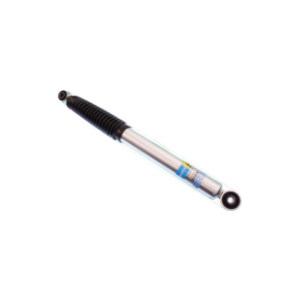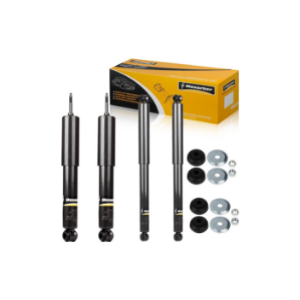If you’re searching “how to replace shock absorber,” it’s likely because you’ve noticed signs that your car’s shocks are worn out — maybe they’re leaking oil, your car feels unstable on bumpy roads, or your tires are bouncing instead of rolling smoothly.
If that’s the case, it’s time to replace those old shocks with new ones.
Since you’re here, it’s clear you want to take on the task yourself. That’s a smart choice! Replacing the shock absorber on your own can save you money and give you the satisfaction of doing it yourself. Plus, unlike a mechanic who handles this job repeatedly, you’ll have the time and focus to get it right for your car.
So, let’s dive into the simple steps you can follow to replace your shock absorber and install the new one with confidence.
How to Replace Shock Absorber 2025
Now we are going to discuss about how to change shock absorber in 10 easiest steps which will surely boost your confidence level to do the whole task by yourselves. So scroll down and read our below given 10 steps.
Things that you need to have with you for replacing shock absorber are
Jack stands
Floor Jack
Sockets & Ratchets
Wheel blocks
Wheel chocks
Few wrenches
And the last one is new shock absorber
Step 1: Prepare Your Vehicle
Before you start replacing the shock absorber, take safety precautions. Place wheel chocks or blocks in front and behind the wheels to ensure the car stays in place while you’re working.
Step 2: Inspect the Shock Absorber
Examine your shock absorber to see if it’s leaking oil or if you’re having trouble steering, especially when turning. Also, check if your tires bounce excessively when driving over rough roads. These are signs that it’s time to replace the shocks.
Step 3: Get a Strut Assembly
Head to the market and buy a strut assembly. While it may cost more, this kit will make the replacement easier and more precise, saving you time and effort.
Step 4: Mark the Positions
Start by working on one side of the vehicle. Mark the position of all the nuts and bolts holding the shock absorber in place. You can use the other side of the car as a reference. Then, raise the car using a jack stand. If any rust is present, lubricate the nuts and bolts before loosening them. Secure the rotor to the hub with two lug nuts, and attach an angle gauge to the top of the rotor to note the exact angle.
Step 5: Disconnect Components
Now, disconnect the stabilizer bar end link and any brake lines attached to the shock absorber. Use a wrench to hold the stabilizer bar link in place, then loosen the nuts using a socket and ratchet. Once you’ve done that, push the link out of the shock absorber hole. Don’t forget to disconnect the wheel speed sensor and set it aside.
Step 6: Loosen the Nuts and Bolts
Use your muscle power to loosen the shock absorber nuts. Once the nuts are off, loosen the bolts as well. You may need to push the steering knuckle back and forth to shake the bolts free from the holes.
Step 7: Loosen the Shock Absorber Nuts
Continue loosening the shock absorber nuts with a socket ratchet. Remove all but one of the nuts to keep the shock absorber in place while you proceed with the next steps.
Step 8: Remove the Old Shock Absorber
Once you’ve removed the nuts, support the shock absorber with your hands. Carefully tilt the bottom of the shock absorber towards you, then remove it. Now, install the new shock absorber you purchased. While installing, ensure you’ve remembered the position of the nuts and the exact angle of the previous setup. This will make the job easier and more accurate.
Step 9: Secure the New Shock Absorber
Since installing the shock absorber requires a bit of muscle, it’s a good idea to ask a friend to help. As you secure the nuts, have your friend hold the shock absorber in place. Push the steering knuckle into the strut flange, then use a pin punch to align one hole for inserting a bolt. Once the bolt is in, remove the pin punch and insert the second bolt. Don’t tighten the nuts fully yet. Reattach your angle gauge, adjust the knuckle to the correct camber angle, and torque the nuts to the specified settings.
Step 10: Reinstall Removed Parts
Now that the new shock absorber is in place, reinstall all the components you removed during the process. Double-check everything to make sure everything is securely reattached.
Final Step: Test Drive Your Car
After replacing the shock absorber, take your car for a test drive. Drive slowly and carefully to check if everything feels right. Listen for any unusual noises that might indicate a mistake. If everything runs smoothly, then congratulations! You’ve successfully replaced your shock absorber on your own.
Have a test drive after changing the shocks
Now after replacing the shock absorber you must take a test drive. While having the test drive you must remember one thing that is you should not drive your car at high speed because you are taking the drive to check whether you have changes the shocks perfectly or not. If you hear any noise then immediately stop your car and check where you have done the mistake. But if you feel that everything is running smoothly then you must feel confident that you have done the task of changing shock absorber perfectly in your first attempt.
Read more about – How to install front shocks on a chevy truck
How much does a shock replacement cost?
Wondering about the cost of replacing shocks? The price isn’t fixed because it depends on the type of shock absorber you choose. If you opt for high-quality shocks, expect to pay more. On the other hand, budget-friendly or cost-effective options will be cheaper. Generally, the cost of replacing shocks yourself ranges from $200 to $400. However, if you decide to have the job done at a garage, you might pay an additional $150 to $300 for labor.
Conclusion
Wondering about the cost of replacing shocks? The price isn’t fixed because it depends on the type of shock absorber you choose. If you opt for high-quality shocks, expect to pay more. On the other hand, budget-friendly or cost-effective options will be cheaper. Generally, the cost of replacing shocks yourself ranges from $200 to $400. However, if you decide to have the job done at a garage, you might pay an additional $150 to $300 for labor.


